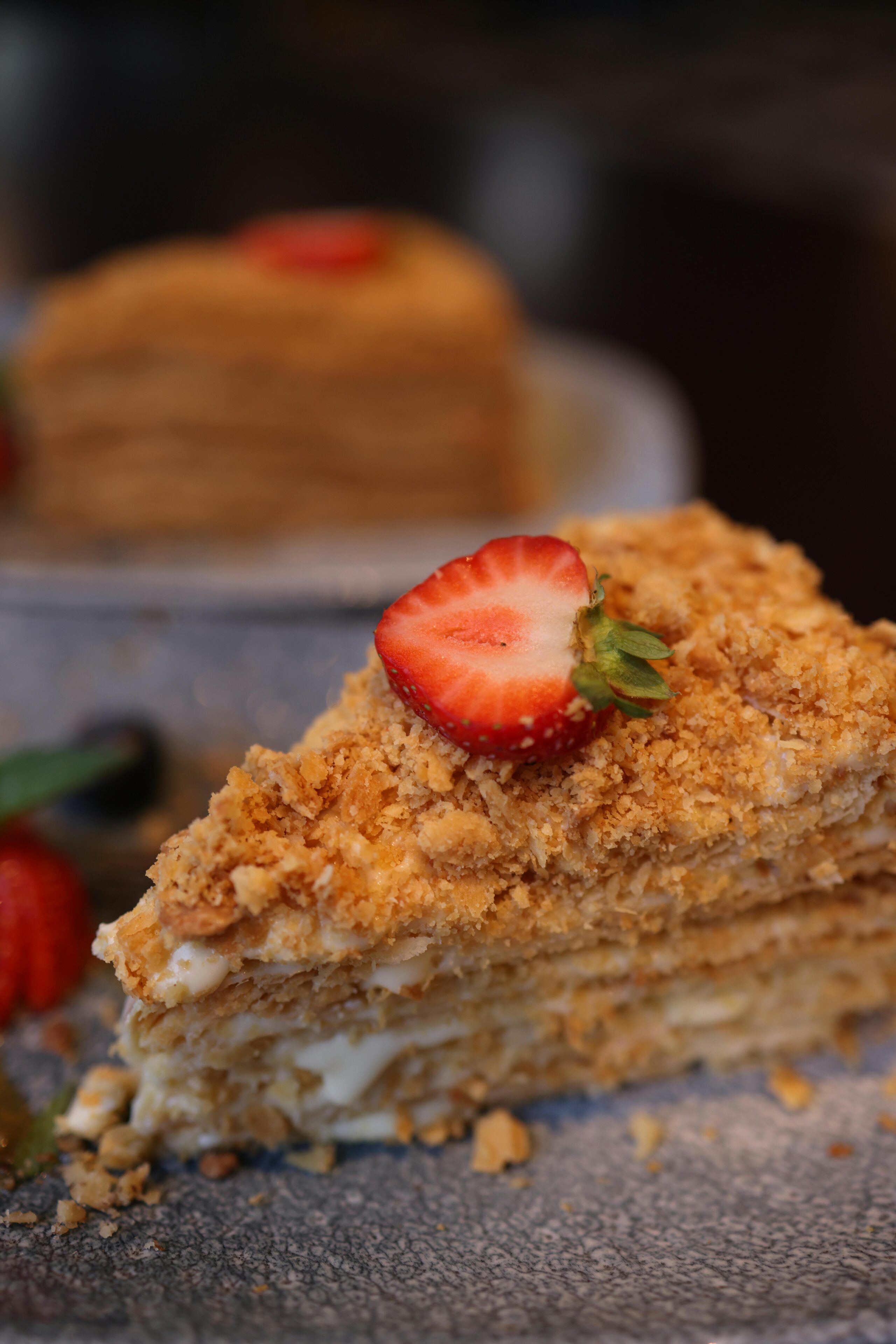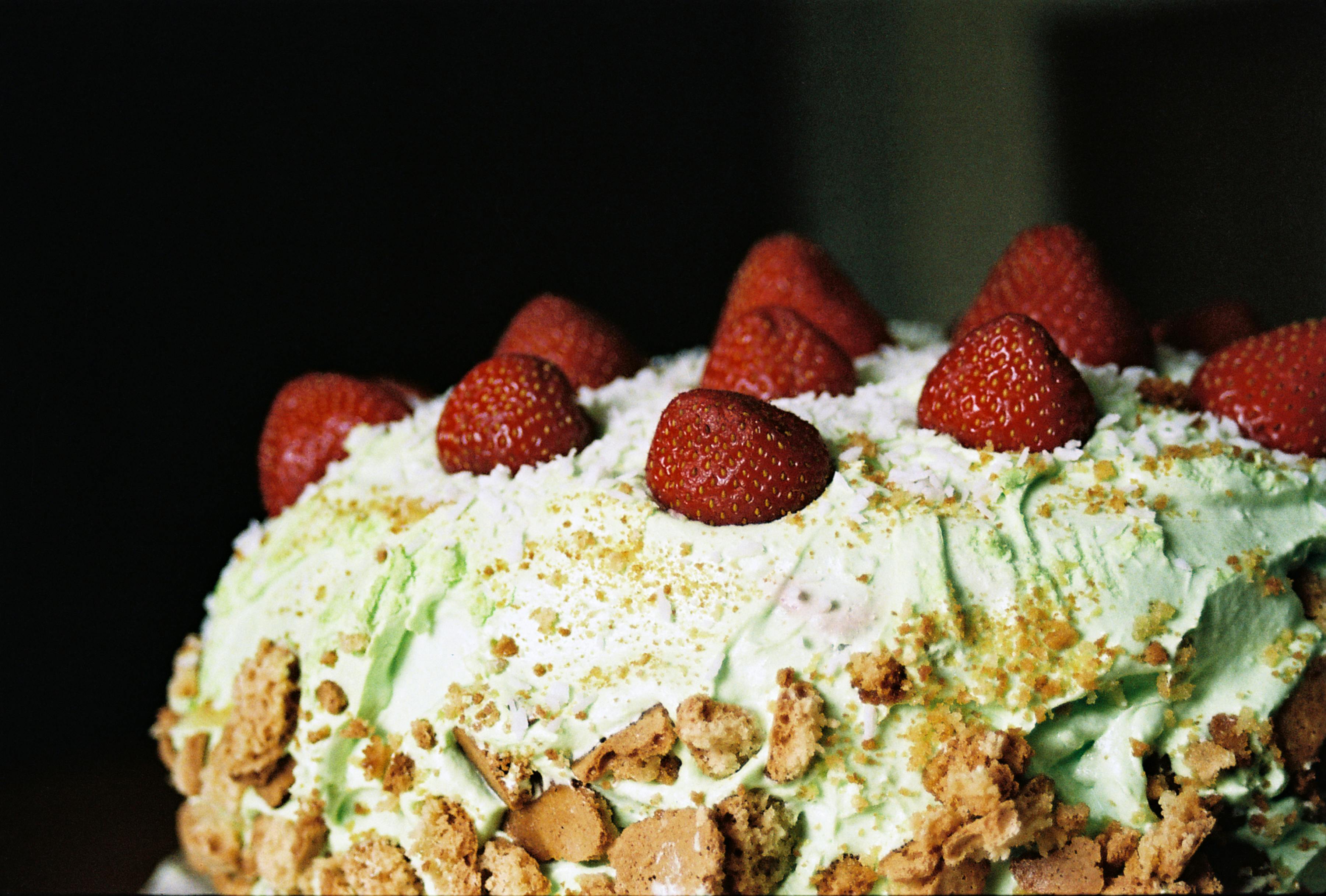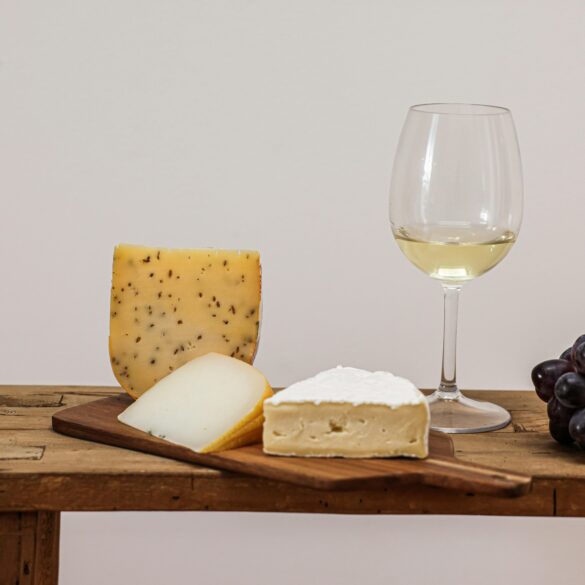Authentic Prinsesstårta Recipe: Sweden’s Chef Secrets Revealed
Funny thing is, the first Swedish Prinsesstårta I tried wasn’t in Stockholm, but in a chilly café in Gothenburg, washed down with strong black coffee and piles of conversation. Up until that moment, I genuinely hadn’t appreciated the level of obsession Sweden pours into its pastry tradition. So why are professional pastry chefs—and home bakers alike—fixated on mastering the iconic Prinsesstårta? In my experience, it’s partly the ethereal texture: layers of feather-light sponge, cloud-like vanilla custard, airy whipped cream, and a slick, emerald marzipan dome. But honestly, the deeper reason is cultural. Swedes treat Prinsesstårta as a celebratory centerpiece, layered not just with flavor but with generations of tradition and craftsmanship1.
We’re going to unpack this masterpiece layer by layer—not just the “how-to,” but the “why,” straight from Stockholm’s pastry chef circuit and real Swedish kitchens. What really strikes me: the expertise isn’t just technical, it’s emotional—driven by relentless pursuit of that perfect balance between visual drama and barely-there sponge. I’ll share the actual pro secrets pastry chefs use, and, I promise, every step will be peppered with authentic fails, real chef tips, and cultural backstories. Ever wonder why the marzipan cover is green? You’ll get the legendary answer, plus practical fixes when your dome cracks (I’ve been there).
The History & Cultural Significance of Prinsesstårta
Where do you even start with Prinsesstårta’s origin stories? Interestingly enough, it all begins in the 1920s—when the royal Swedish princesses, apparently tired of bland birthday cakes, commissioned their baking tutor, Jenny Åkerström, to invent something more…well, regal2. The result was what we now call Prinsesstårta (“Princess Cake”)—a construction so visually spectacular and delicate that it quickly became the go-to for celebrations across Sweden. Now, every September, “Prinsesstårtans vecka” (Princess Cake Week) sees patisseries and households bake countless green domes for birthdays, graduations, midsummer, even work promotions. Back in 2015, I visited Stockholm during this week and, honestly, it’s bonkers—every window lined with glossy green domes and pink decorative roses.
What struck me most wasn’t just the visual—the taste is an emotional time capsule. To this day, Swedes debate fiercely over the exact ratio of custard to whipped cream and whether the marzipan dome should be pale green or vivid neon3. (Honestly, I go back and forth.) The result is a pastry so compelling that it bridges childhood nostalgia and adult sophistication; no one eats Prinsesstårta casually.
Sweden officially registers the “Prinsesstårta” as a protected regional dish. Bakeries in Stockholm and Malmö must follow strict guidelines for authenticity, mirroring French “appellation contrôlée” regulations4.
Core Ingredients & Chef-Level Choices
So what’s inside that melodic green dome? Here’s the professional breakdown—a blueprint that separates real Swedish Prinsesstårta from generic “princess cakes” you’ll find in tourist cafés:
| Layer | Authentic Ingredient | Chef Variation | Pro Tip |
|---|---|---|---|
| Sponge | Fresh, hand-whisked eggs, Swedish flour | Almond flour for deeper flavor | Bake with steam for cloudlike texture |
| Jam | Homemade raspberry (no pectin) | Lingonberry or cloudberry | Spread ultra-thin for subtle acidity |
| Pastry Cream | Real vanilla bean, egg yolks | Cardamom infusion | Cool in a wide tray for smooth layering |
| Whipped Cream | 35% Swedish cream | Elderflower syrup | Whip gently for soft peaks, never stiff |
| Marzipan Dome | Hand-kneaded almond paste | Spinach for color, not dye | Roll ultra-thin, use cornstarch instead of icing sugar |
It took me several tries (okay, four disastrous attempts) before I truly understood why pastry chefs obsessively fine-tune every layer. Actually, let me clarify that: the underlying goal isn’t perfection, but true Swedish flavor balance and featherweight mouthfeel—no single layer should dominate, everything is about harmony5.
Back when I started experimenting, the marzipan dome—not the cake itself—was the difference between good and unforgettable. Here’s the thing though: handmade marzipan reacts to humidity and temperature way more than commercial pre-mixed paste. A mentor once told me, “If the dome tears, you’ve learned more than a perfect finish ever teaches.” (He wasn’t wrong.)
Pause here and think about: every Prinsesstårta is an edible snapshot of memory, tradition, and Sweden’s relentless pursuit of beautiful simplicity.
Step-by-Step Pro Preparation Guide
Here’s what gets me: making authentic Prinsesstårta isn’t actually about technical difficulty—it’s about ritual, sequence, and paying attention to tiny details that shift texture and taste from “fine” to “Swedish royal.” For those of us who’ve spent hours in hot, flour-dusted pastry kitchens, the real learning comes from repeated tweaks and, honestly, more than a few sticky disasters. Let’s layer out the pro chef’s step-by-step blueprint, emphasizing genuine nuance rather than formulaic repetition.
- Sponge Cake: Whisk fresh eggs and sugar until tripled in volume—don’t rush, this step builds structure. Sift in fine Swedish wheat flour and fold gently (don’t overmix or you’ll deflate your layers). Bake with a tray of boiling water at the oven base—steam is your secret weapon for subtle, resilient texture6.
- Jam Layer: Spread a mere whisper of homemade raspberry jam over cooled sponge. Pro chefs use cloudberry or lingonberry when available (I’ve never been fond of commercial jams; homemade always wins).
- Pastry Cream: Scald cream with true vanilla pod, temper with egg yolks, thicken gently—never boil. (Mistake here? Split, lumpy custard. Don’t panic: strain and chill flat on a tray.)
- Whipped Cream: Whip chilled cream to soft peaks; flavor with a drizzle of elderflower syrup for “Swedish garden” notes. (“Overwhip and you lose airy bounce,” a Malmö chef scolded me once; he was right.)
- Assembly: Stack sponge, jam, cream, and whipped cream in strict order—press lightly, never squash. Top with a gently domed mountain of the billowy cream.
- Marzipan Dome: Roll almond paste ultra-thin, dust with cornstarch for seamless finish. Carefully lift and cover the cake. (Here’s where 90% of chef mistakes show up—torn domes, lumpy sides, uneven green. I’ve done them all.)
- Decoration: Craft a pink marzipan rose and 3 green leaves for authentic Swedish look. Pro chefs use a fine brush to dust the dome with shimmer (purely optional—aesthetic, not flavor).
On second thought, let’s clarify some recurring pitfalls—these aren’t just minor annoyances but the difference between “beautifully Swedish” and “pretty but generic.” For instance, home bakers often over-chill the cream (solidifies, won’t fold smoothly) or add too much jam, which leaks and destroys the layer structure.
Some professionals argue for extra egg yolks or additional almond flour; I’m partial to tradition, but I understand why innovations happen. Actually, thinking about it differently, I now believe the only “rule” worth keeping is absolute freshness (nothing ruins Prinsesstårta faster than day-old sponge).
Marzipan Mastery: Chef Techniques & Troubleshooting
Ever notice how the weakest marzipan layer ruins a cake’s credibility at first glance? This is where the professional chef secrets shine. Let me step back: when I first started, every dome I made cracked or wrinkled. The more I consider this, the more I realize humidity in the kitchen (Stockholm winters versus Sydney summers) is the silent saboteur. While Swedish chefs traditionally hand-knead almond paste with blanched almonds, it’s the use of natural spinach for green coloring—not commercial dye—that signifies true authenticity7. Pro tip: chill your rolled marzipan for 10 minutes before placement—temperature shock prevents tearing.
- Roll marzipan on parchment dusted with cornstarch, not powdered sugar
- Use a French pin (tapered) for better, thinner sheets
- Patch tears with a “beauty leaf” (add extra green leaf for repairs)
- Smooth with clean, cold hands—warmth melts the almond oil, making cracks worse
Honestly, I reckon marzipan is 50% technical and 50% emotional—you’ve got to “feel” the elasticity, read the dough, and trust your instincts. I used to think quantity outweighed thinness, but now I lean toward ultra-thin domes for best mouthfeel.
If your dome splits, don’t panic. Pause and patch with a thin strip rolled from scrap marzipan—make it part of the decorative leaves. Swedish chefs actually admire a “learning dome” for annual Prinsesstårta day.
What puzzles me: some chefs never color marzipan, claiming “natural almond beige” is more traditional. I’m not entirely convinced. The green dome is iconic—without it, it’s just another layered sponge.
Plating, Presentation & Seasonal Variations
From my perspective, the “Instagram moment” matters in Sweden. Modern pastry chefs practice crisp, minimalist plating: pure white rounds, single pink rose, and a slice cut precisely at a dramatic angle. I’ve seen Stockholm patisseries use edible gold dust or Swedish wildflower petals for summer variation8. Meanwhile, at Christmas, it’s common to color half the dome pastel blue for “winter princess” theme.
- Classic: Pink marzipan rose, three leaves
- Spring: Pink rose with wildflower petal dust
- Summer: Thin dome, topped with raspberries
- Christmas: Half green, half pastel blue dome
What I should have mentioned first: serve Prinsesstårta at room temperature—never chilled straight from the fridge. Cold destroys the soft texture and subdues the subtle vanilla and almond aromatics. I learned this the hard way, serving an ice-cold cake to a group of disappointed Swedes at a midsummer party. Never again!

Troubleshooting Common Chef Mistakes & Pro Solutions
I’ll be completely honest: there’s a running joke in Swedish pastry circles that nobody gets Prinsesstårta right the first (or even third) time. Let’s run through authentic troubleshooting, correcting mistakes I’ve personally made—and seen professionals tackle.
| Mistake | Pro Solution | Learning Marker | Chef’s Emotional Tip |
|---|---|---|---|
| Sponge too dense | Whisk eggs longer, add pinch of salt | Patience and wrist strength matter | “Let go of the mixer—hand whisk is tradition.” |
| Custard splitting | Strain, chill; add drop of gelatin to rescue | Never walk away during heating | “Stay with the pan—watch, don’t wander.” |
| Cream collapses | Use chilled bowl, soft peaks only | Temperature rules everything | “Feel the cream—textures aren’t just visual.” |
| Marzipan cracks | Patch, chill dome before placement | Kitchen humidity controls everything | “Embrace imperfection—learning domes are progress.” |
What excites me since learning this: Swedish baking is forgiving if you adapt emotionally. The “best” Prinsesstårta is often the one with stories layered through every repair.
- Prepare fresh—never freezer or fridge overnight
- Use local Swedish cream for clean, pure flavor
- Hand-whisk sponge for authentic texture
- Roll marzipan ultra-thin, keep edges smooth
- Decorate with single pink rose and three leaves
- Slice confidently—celebrations require drama
I remember when this first clicked for me during a Malmö culinary workshop—presentation is more than aesthetics, it’s about honoring the cake’s history and ritual. Practically speaking, I now serve Prinsesstårta with a side of fresh berries and a pot of strong coffee—a nod to Swedish fika culture.
Future Trends & International Adaptations
Right now, Swedish patisseries are experimenting with gluten-free and vegan Prinsesstårta variants, aiming for the same mouthfeel without wheat or dairy. Interestingly, cloudberry jam is trending as the “new” pro favorite, pushing the iconic raspberry aside for a more wild, Nordic flavor experience9. I’m still learning about hydrocolloid replacements for egg-based custard—a few Stockholm chefs swear by agar agar, but the jury’s still out for me.
Internationally, Prinsesstårta now appears in London, Vancouver, even Sydney bakeries, sometimes with purple-colored domes or tropical fruit jams. I have to say, I love the creativity, but there’s always risk of losing cultural meaning in the pursuit of novelty. What connects all modern versions: the relentless drive for drama, nostalgia, and that uniquely Scandinavian emotional connection to dessert.
Let that sink in for a moment: a nearly century-old cake, continually reimagined on global stages, yet its core experience still resonates with Swedish children and Michelin-star chefs alike. Meanwhile, sustainability is now a major conversation: Stockholm bakers source local, organic almonds for marzipan, reduce food waste, and even offer reusable “princess cake domes” made from edible rice paper10.
- Gluten-free sponge alternatives
- Plant-based cream and custard
- Sustainably sourced, organic marzipan
- “Edible rice paper” for waste-free domes
As someone who grew up with classic cakes, this creative, sustainable approach truly excites me. Looking ahead, I believe Prinsesstårta will continue to reflect Sweden’s evolving commitment to tradition, environment, and culinary precision in new, accessible ways.
Final Thoughts & Your Prinsesstårta Blueprint
Having worked with pastry chefs from across Sweden and made more than a dozen homemade Prinsesstårta domes—at least six cracked, several beautifully risen, all memorable—I’ve consistently found a few truths. First, the pursuit of “perfection” is always balanced by the joy of tradition and the excitement of personal interpretation. The technical steps matter, but the emotional resonance—nostalgia, celebration, personal touch—defines every slice11.
Ready to build your own expert blueprint? Try the authentic Swedish step-by-step recipe, experiment with professional marzipan hacks, and create your personal touch for Prinsesstårta. Bake with intention, embrace every learning moment, and—most importantly—share the ritual with friends, family, and fellow enthusiasts. That’s real Swedish pastry mastery.
Pause here and consider: Each Prinsesstårta you bake is not just a culinary achievement, but a celebration of Swedish history, innovation, and emotional connection. My current thinking? Pass down your version, teach the next generation, and let the cracks in your dome become meaningful markers of learning and tradition.
References & Further Reading



